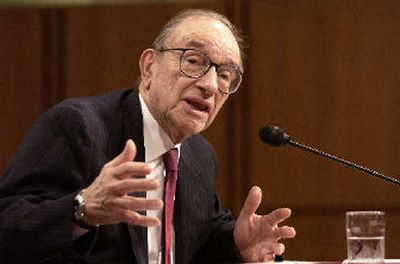Economy withstood its pricing pressures

NEW YORK – It wasn’t the way the inflation story was supposed to go in 2005. With oil and other commodity costs soaring, fears of prices surging out of control were on the mind of everyone from the Federal Reserve to business leaders to consumers.
Thankfully, that grim scenario didn’t happen. Sure, Americans are spending more to fill up their cars with gas or to heat their homes, eat Jell-O pudding, send a FedEx package or buy a new Sealy mattress. Yet overall, price increases have remained decidedly — and surprisingly — tame.
The reason: competition and productivity improvements, which have made it more difficult for inflationary pressures to ravage the economy over the last year, and probably for many more to come.
Worries about inflation intensified in 2005 as oil prices sharply accelerated for the second straight year amid concerns that supply was far short of global demand.
During the spring, crude oil prices soared past the $55 per barrel high reached in October 2004, then moved above $60 and peaked at almost $71 in the late summer after Hurricane Katrina crippled the Gulf Coast. While they had retreated to around $60 by the end of the year, that’s still well ahead of the $43 a barrel where it started 2005.
Those steep gains pushed the average retail gasoline price to over $3 a gallon in September, an increase in some markets of as much as $1 from just weeks before. And even though gas prices have pulled back to pre-Katrina levels, consumers face much higher home heating costs this winter.
At the same time, the price of commodities from corn to steel has risen.
These price jumps have fed concerns that inflationary pressures would start creeping into the broader economy. It’s not difficult to see how that could happen — anyone buying raw materials or transporting products would be paying more, which raises the chance that they would then pass that along to their customers.
The Fed has been closely watching this threat for months.
“There was a risk that the large cumulative rise in energy and petroleum product prices through the summer would be transmitted to core consumer prices,” the Fed’s policy-makers said, according to the minutes from their closed-door meeting on Nov. 1.
To fend off inflation, the Fed continued to boost the federal funds rate. So far, those efforts have paid off. In a statement after its last meeting of the year, the Fed said that core inflation had “stayed relatively low in recent months and longer-term inflation expectations remain well-contained.”